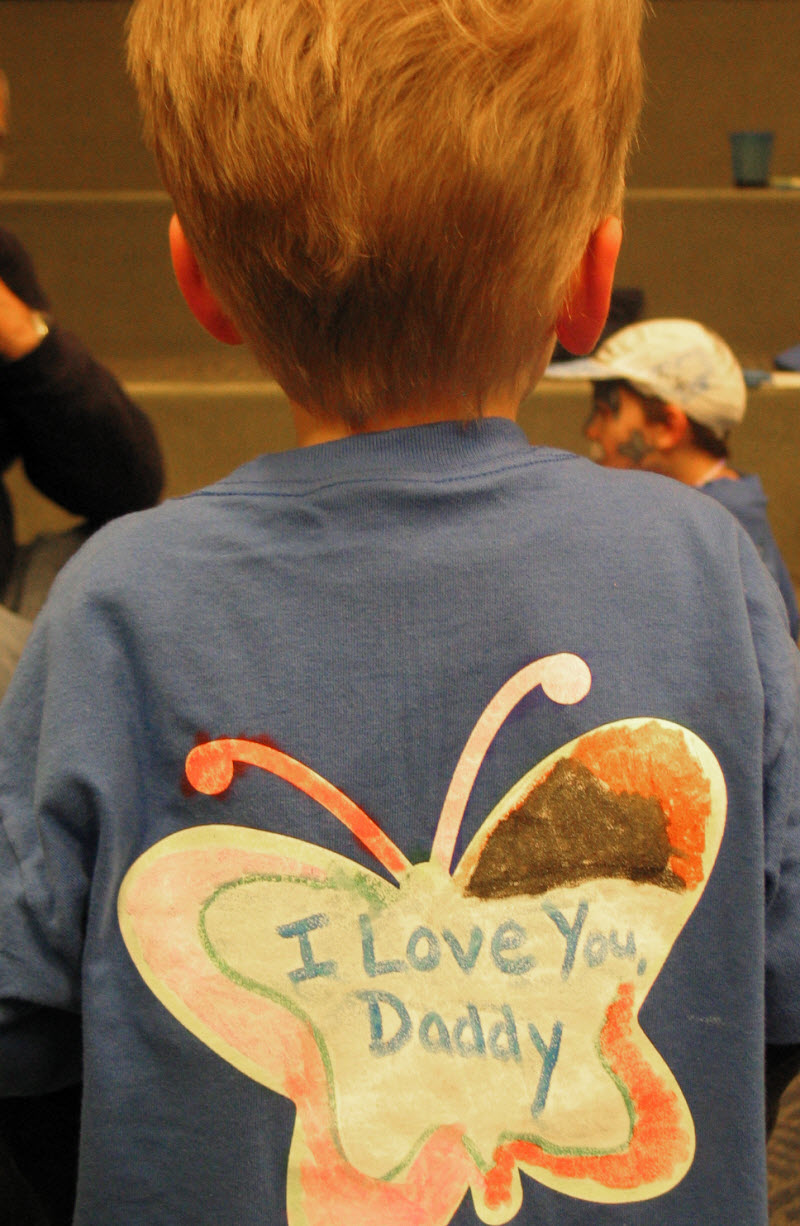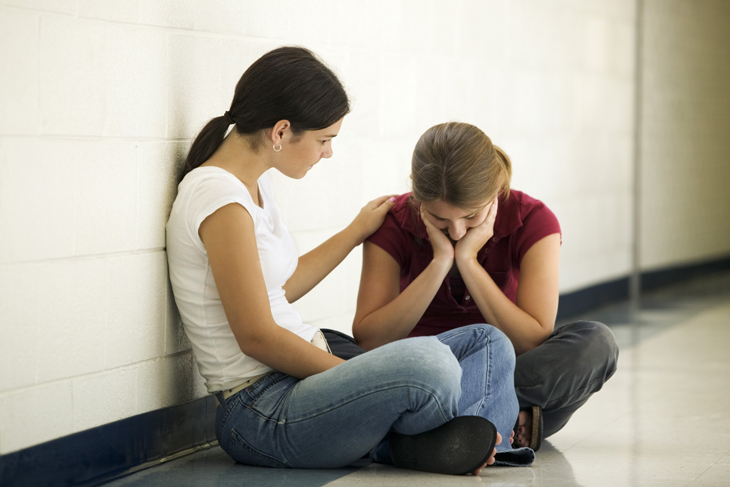Editor’s Update: This article was first published October 24, 2014. It was most recently reviewed and updated November 3, 2023, including adding a link to a video tour of the Highmark Caring Place produced in 2023.
I work with kids and teens who’ve had a death in their family.
I work at the Highmark Caring Place.
When I tell people what I do, I usually see two reactions, sometimes spoken, sometimes expressed in their faces. First, it’s admiration: “What a good thing you do.” And then, following up so quickly that it trips on the feet of the first reaction, it’s a pulling back: “But it must be so sad; I could never do that.”
It’s true — the death of someone we love is more than sad; it’s devastating, especially in the life of a child.
And yet — I’ve never been in such a hope-filled place as I am at the Caring Place.
Kids walk in through the front doors of the Caring Place confused, scared, wary, trying to keep it all covered, all deep down inside. They come in with their families, and they really don’t know what to expect:

Imagine going through a natural disaster. Imagine your house, your town, leveled by a tornado. The sun rises on the next day. You look out on all the debris. What do you do now? Where do you start? How do you go on? It’s not clear, but you and your neighbors pull together and make a go of it. You work together, talk together, cry together, even laugh a little together. It may be terrible, but at least you have each other.
Now imagine the same disaster happening inside a six-year-old, or a 10-year-old, or a 15-year-old. In a place where no one else can see the debris strewn around. Going through an experience that none of your neighbors have shared, none of your friends have ever experienced, no one around you understands.
And your friends all say things like, “Try not to think about it.” Or, “She’s in a better place.” Or, “You shouldn’t feel that way.” Or, “I know how you feel.” Or, “Shouldn’t you be over this by now?” They’re trying to be helpful, but there really is no “answer” to what you’re feeling. It doesn’t help.
And then your parent, or your guardian, says, “We should go to the Caring Place.” And you wonder, “The Caring Place? What is the Caring Place?”
You walk into the Caring Place not at all knowing what to expect. There’s a large room you go into that eventually fills up with a lot more people — many of them your age. And there’s pizza to eat. Cookies. Fruit. Drinks.
You know why the kids are there — for the same reason that you’re there. And although you’ve made up your mind that you’re not going to talk about anything deep, at least you can see that you’re really not the only person who has gone through the death of someone close to you.

After you eat, you wander into another room, a room with air hockey tables — and who would have thought that a grieving center would have games in it? You can play, and have fun, and even laugh if you want to. You join in a game with someone else, and over the noise of the table and the pucks clacking off the boards, you talk about one thing or another and begin to get to know other kids.
And later still, you’re in a room with other kids your age, along with some adults — volunteers — people who are there, not to teach you, but to help make the room as comfortable as possible for you to talk with the other kids there.
The adult or adults you came with — they’re in their own room, getting to talk with other adults, getting help for their own grief, which is really a big relief to you, because you know they’ve been feeling terrible for all this time, and you’ve been trying to help them the best that you can, but really, you don’t have any idea what they truly need. Now at least they’re with other people who know how to help them.
You talk about school — you and the other five or eight or 10 kids in the room — and you talk about hobbies, or pets, or favorite foods. Nothing too hard, but you do start to get to know one another. You find out that whatever questions are asked, whatever topics are raised, no one has to talk about anything if they don’t want to.
But then one kid mentions their person who died. It seems natural; you all know why you came here in the first place, after all. No one says anything crazy, like at school. There are nods, uh-huhs, “Yeah, that was like what I went through….” No looks of pity. The other kids do understand.
And eventually — maybe this time, maybe the next meeting — you finally share something yourself about the person in your life that you loved so much, and still love so much. And everyone around the table looks at you, not like you’re an alien, not like they wished you would talk about anything else but this, not like they feel so sorry for you, but just — normal.
It feels good to be in a place where you feel normal. It feels good to be in a place where you’re not alone. It feels good to be in a place where people understand you.
Over the weeks you’re together — 10 meetings with these same kids and families — you’ll end up saying more about the person who died, interspersed with lots of talk about lots of other things, like how your team is doing, and the homework you have, and the funny thing your pet did last weekend.
But the more you talk about the person who died, and the memories you have, and the feelings that you feel, the easier it is to talk about these things the next time — at the Caring Place, and at home, and in other places too.
Sure: that person is still gone. No one can bring them back. And that hole will stay inside forever. But just knowing that you’re not the only one, just knowing that you’re not alone, just realizing that someone else understands what you’re going through — that makes it all so much more bearable.
At the end of the 10 meetings, there’s still a long road ahead for these kids. But they — almost all of them — walk out of those doors much more confident, much more in control, much more open than when they walked in such a short time ago. As 15-year-old Megan said, four years after her father died in a plane crash, “I didn’t know how I was going to live my life without my Dad. At the Caring Place, I found the light of hope.”
That’s why I think of the Caring Place as a place of hope. That’s why I feel so privileged to work at a place like the Caring Place.
This video will give you a tour of the Caring Place experience. For more information, and a wide range of resources on grieving, visit the Caring Place website.